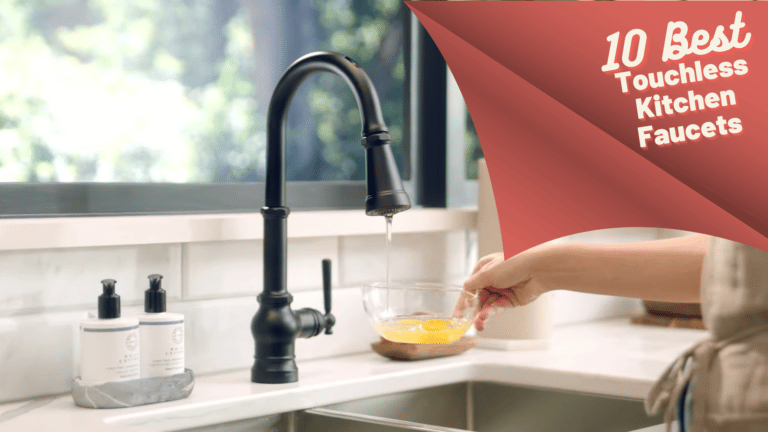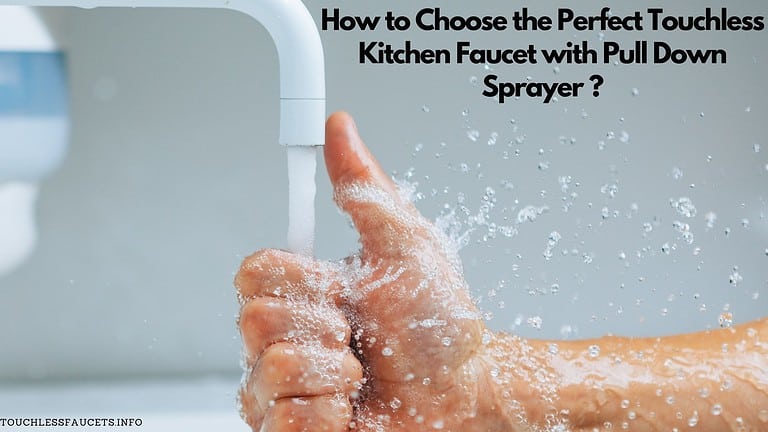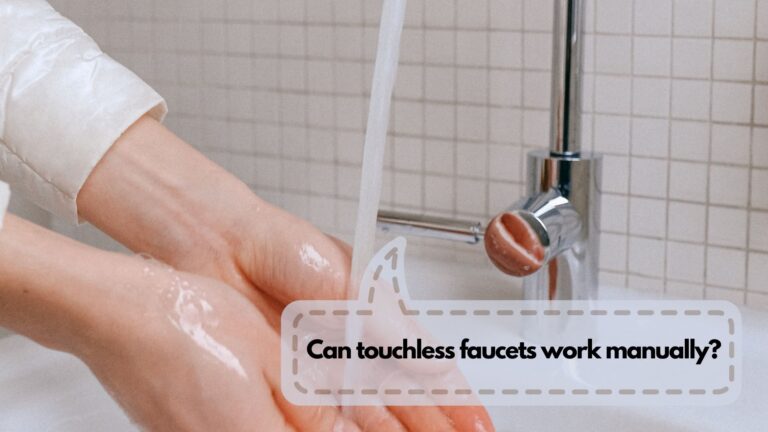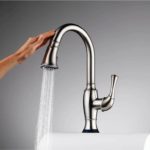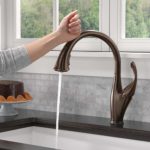Touchless faucets are rapidly gaining popularity for a number of reasons. First, they are more efficient than traditional faucets because they do not require users to touch the faucet in order to turn it on or off. Second, they are safer for those with physical disabilities as well as the elderly and young children who cannot easily turn on or off faucets. Third, they are more environmentally friendly as there is less water usage, which can reduce water bills. Finally, they offer additional benefits such as being able to adjust the temperature of the water without touching the faucet.
Although many people have used touchless faucets in their homes, the reliability of touchless faucets has been a point of concern for some homeowners. As such, we decided to investigate whether or not touchless faucets actually work and if they are as reliable as they are made out to be.
What should you consider when choosing touchless faucets over traditional ones?
Touchless faucets have become very popular in recent years. Many people have had the pleasure of enjoying these new types of faucets that allow you to clean your hands while not touching them. However, there are also many people who think that these types of faucets are just gimmicks and not worth the price. This leaves us with a choice: either we can stick with our traditional faucets or we can switch to touchless faucets. The decision to go with one or the other comes down to a couple of factors:
Convenience
Convenience can be a great thing, but only if it’s done right. In this case, the touchless faucet is convenient because you do not have to touch the handles every time you use the faucet, only when you need to change the water temperature. However, there is a learning curve that must be overcome before the faucet is used efficiently.
Hygiene
Touchless faucets are a great alternative to traditional faucets. The pros include reducing the spread of germs and bacteria since there’s no need for people to touch the handles of the faucet to turn on the water flow. The cons are that they may not be as comfortable to use and not everyone will be able to get used to them. However, if you’re looking for an easy way to provide a clean environment to your home, touchless faucets have a clear advantage over traditional ones.
Water savings
Water conservation has become a hot topic lately. In fact, the average American uses over 100 gallons of water per day. That’s a lot of water! But, if you think about how many times you leave the water running while doing other tasks, you might want to consider installing touchless faucets. These faucets automatically shut off when you aren’t using them, saving you a lot of water. So, by installing a touchless faucet, you can help reduce water waste and lower utility bills.
Higher initial cost
There is an initial cost associated with every project. Touchless faucets are indeed more expensive than traditional faucets, but in the long run, they save you money by cutting down on utility bills. In comparison with traditional faucets, a touchless one can cost up to 40% more. But there are a lot of good deals online and at your local hardware store.
Maintenance
For most people, touchless faucets are just like standard faucets, only they don’t require you to clean them after each use. Instead of using the handle, the faucet uses an infrared sensor to detect whether or not the user’s hand is in proximity to the faucet. Since you don’t need to touch the handle, touchless faucets don’t need to be cleaned as often. However, they also require batteries to power the sensors, so it’s best to replace those batteries periodically.
Installation
Installing a faucet is easy, but it can be a bit intimidating. With both touchless and standard faucets, you’ll need to pull apart the old faucet. The biggest difference between touchless and standard faucets is the installation process. Touchless faucets require more complicated wiring and electronics. Most manufacturers provide detailed installation instructions and you can typically get away by installing it yourself.
Lifespan and Warranty
The lifespan of a kitchen faucet can vary widely depending on the quality of materials used and the type of installation. Most faucets should last between 15-20 years, but it’s important to check the manufacturer’s warranty whether you choose a touchless or a standard faucet. Most faucets come with a Lifetime Limited Warranty. These warranties cover the finish and mechanical components of the faucet. However, when it comes to touchless faucets, there is a limited warranty on the electronic parts of the faucet.
How long do touchless faucets last?
It depends on many factors, including the quality of the product and the frequency of use. Most touchless faucets can last up to 10 years or more with regular maintenance. However, it’s important to keep in mind that touchless faucets can sometimes experience malfunctions or other issues that may require repair or replacement. If you notice any problems with your touchless faucet, such as inconsistent water flow or a malfunctioning sensor, it’s best to address the issue as soon as possible to prevent any further damage or potential leaks.
Common issues that may arise with touchless faucets and how to fix them
If you have a touchless faucet, there are a number of things that can go wrong. It is important to know what to look for when checking the faucet for problems, so you can keep it running smoothly.
Sensor issues
Touchless faucets are convenient, but they can cause problems if the sensors aren’t working correctly. If the infrared sensor is not detecting your hands or is turning on and off unexpectedly, it may need to be cleaned. Wipe away any dirt or debris blocking the sensor with a soft, damp cloth. For assistance, consult the manufacturer’s manual or contact a professional if this does not solve the problem.
Low water pressure
A common issue that may arise with touchless faucets is low water pressure. Low water pressure is usually caused by a clogged line or another blockage that prevents the water from flowing freely. Ensure the aerator is clean and unclogged by removing it and cleaning thoroughly.
Leaks
If your motion sensor faucet is leaking, check the connections to ensure they are tight and secure. If the leak persists, it may be due to a faulty valve or seal, which will require repair or replacement.
Battery replacement
A hands-free faucet is a great feature that can save you money and time. However, it does require batteries to power the infrared sensor. The life of the battery will depend on the brand of the faucet and how often you use it. Typically should last between 6 months to 2 years. The good news is that the batteries are cheap and easily replaceable. Refer to the faucet’s manual for information on how to replace the batteries.
Power outage
If the power goes out, you can’t use your touchless faucet. Most touchless faucets can run either on AC power or batteries. A few touchless taps can be switched to manual mode in case of a power outage. This allows you to use your faucet manually, even if the power is out. It is always helpful to keep spare batteries in your home.
Water temperature
You can adjust the water temperature manually with most touchless kitchen faucets. Another common problem that people run into is that their touchless faucet doesn’t have a temperature control option. If your faucet doesn’t have this option, you may need to adjust the temperature of the water on the mixing valve under the sink.
We have an entire guide that you should check out if you need further information on troubleshooting your touchless faucet.
Are touchless faucets worth it?
Touchless faucets are a great way to save water and cut down utility bills. They can also provide a reliable, clean, and hygienic experience for those who might struggle with turning traditional faucets on and off. However, these faucets can also be more expensive than traditional faucets and require periodic battery replacement. Whether or not you should invest in a touchless faucet will depend on your own personal preferences and needs.
What is the most reliable touchless kitchen faucet?
For most people, buying a touchless kitchen faucet is an investment in convenience. That’s why it’s so important to choose a faucet that meets your needs and preferences. If you’re looking for something reliable and affordable, a touchless kitchen faucet like the one featured above may be a good fit:
- Moen Arbor Motionsense. If you’re looking for a reliable touchless kitchen faucet that’s both beautiful and easy to use, look no further than the Moen Arbor Motionsense. It’s stylish, affordable, and reliable, and it features dual sensors that allow for easy and intuitive use.
- Delta Trinsic Pro Touch Kitchen Faucet. Trinsic Pro is another great choice for a reliable faucet. It’s easy to install, durable and provides years of dependable service. It also has some great features like Touch2O technology, which allows you to turn the faucet on and off with just a touch anywhere on the spout or handle.
- Kraus Touchless Kitchen Faucet. The Kraus touchless kitchen faucet has an excellent reputation for being one of the most reliable faucets available. It has a very simple design and easy installation. It also boasts touchless functionality, meaning that you don’t have to touch anything when you use the sink.
Final conclusion
Touchless faucets are an innovative design that has become increasingly popular in recent years. While they may cost more than traditional faucets, they offer a number of benefits over their traditional counterparts, such as improved hygiene, water conservation, and a sleek modern aesthetic. Yet, some people worry that touchless faucets may not be as reliable as traditional faucets. While there is no evidence that touchless faucets are less reliable, it’s important to consider whether they are worth the cost and hassle. If you’re interested in learning more about touchless faucets, why not check out our post on the best touchless faucets available today?


